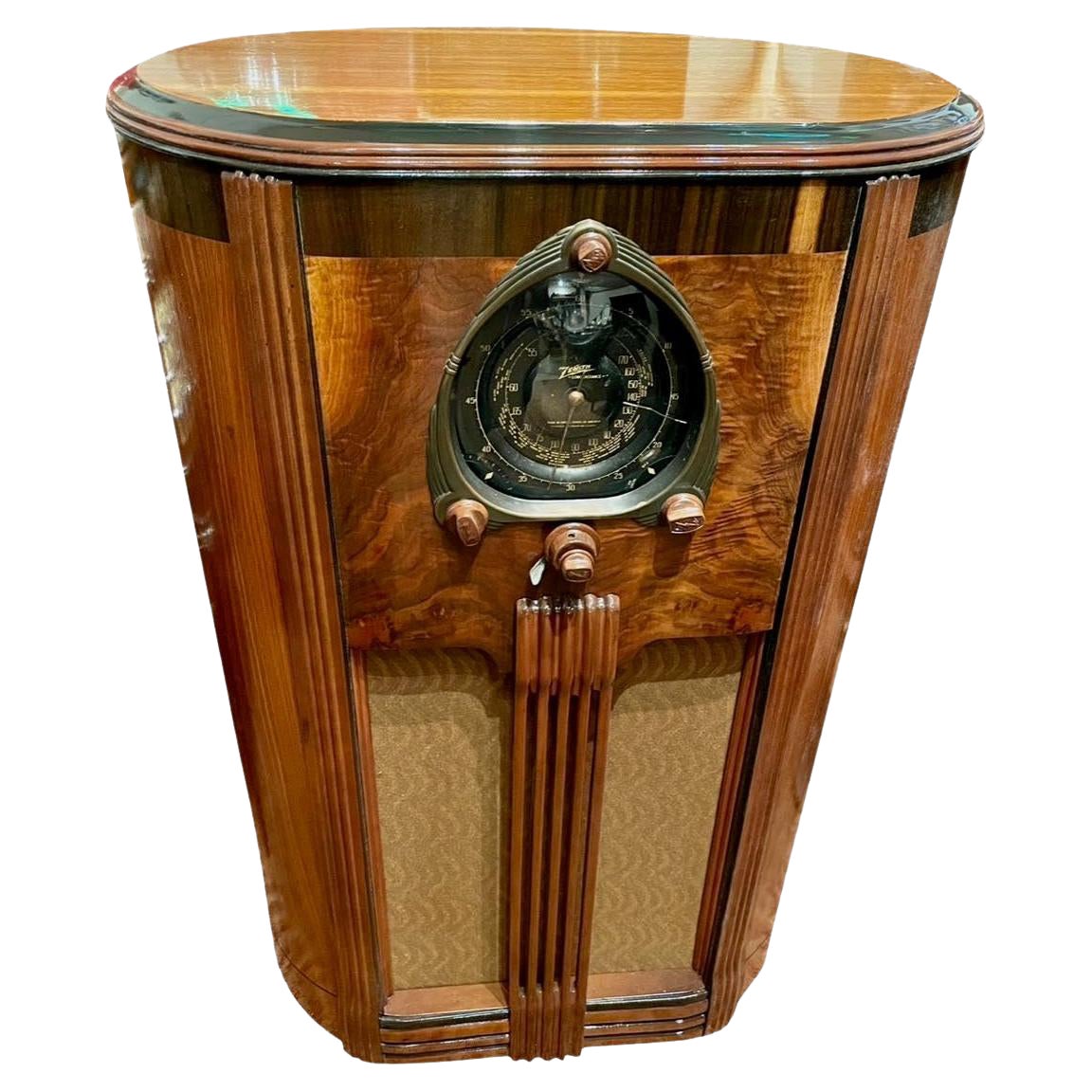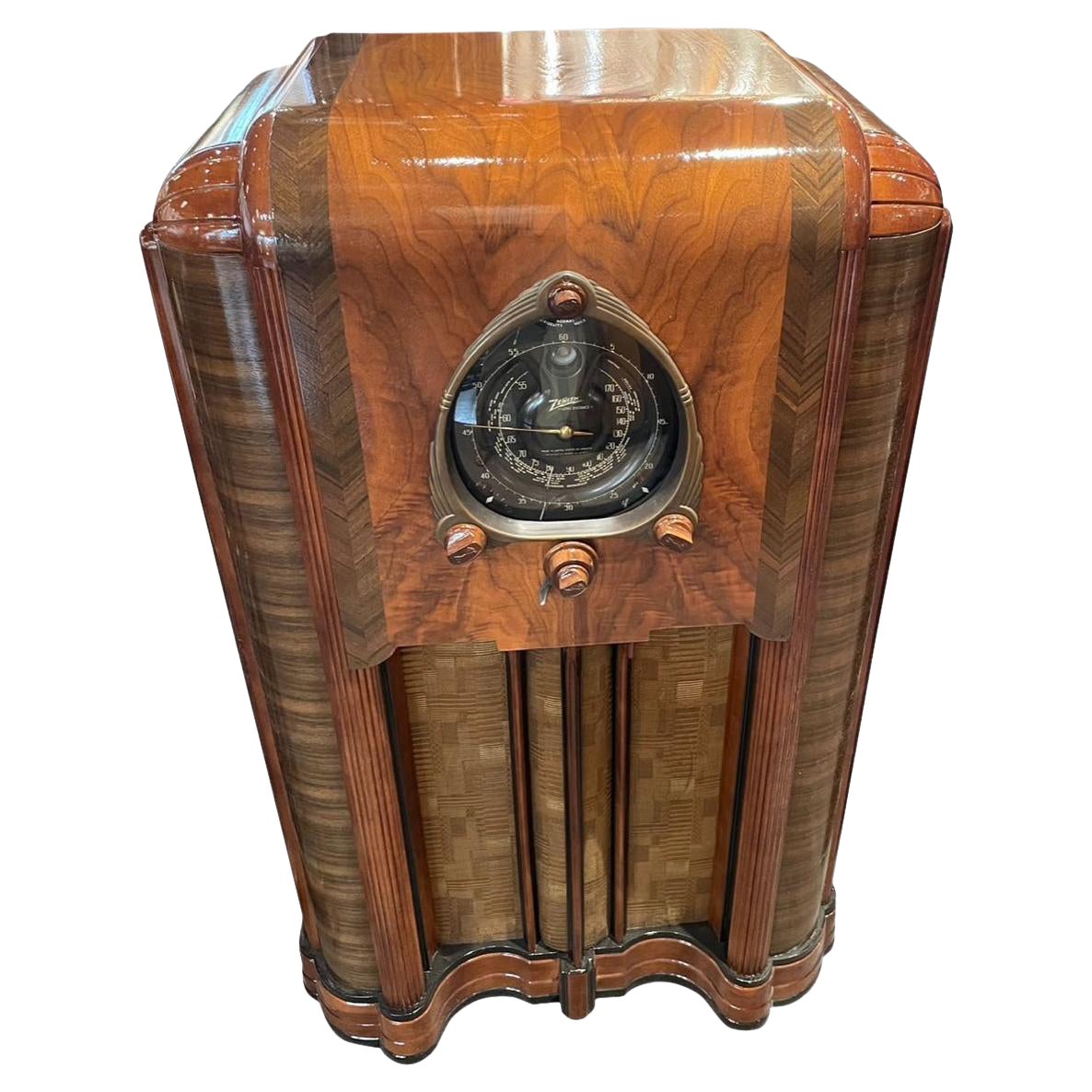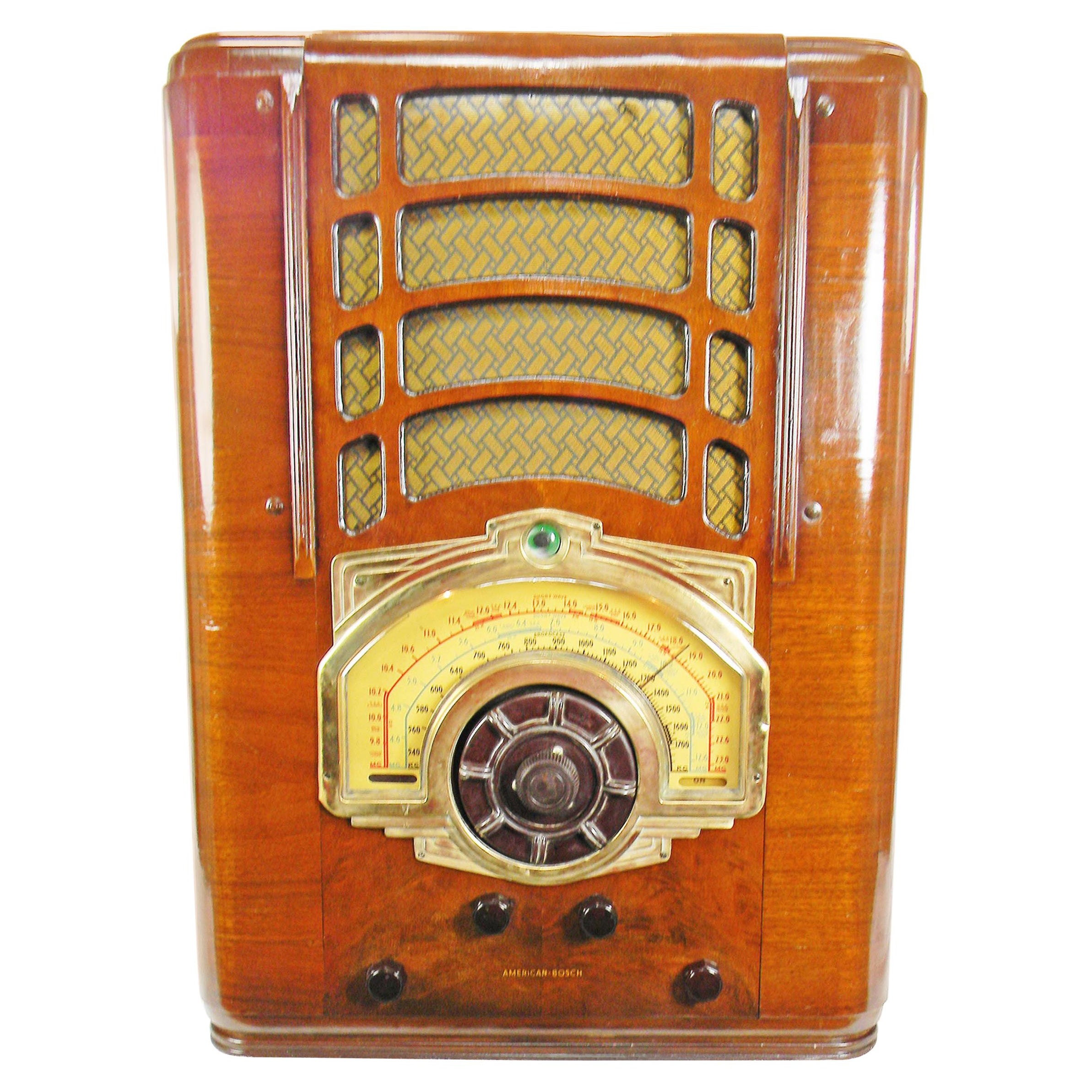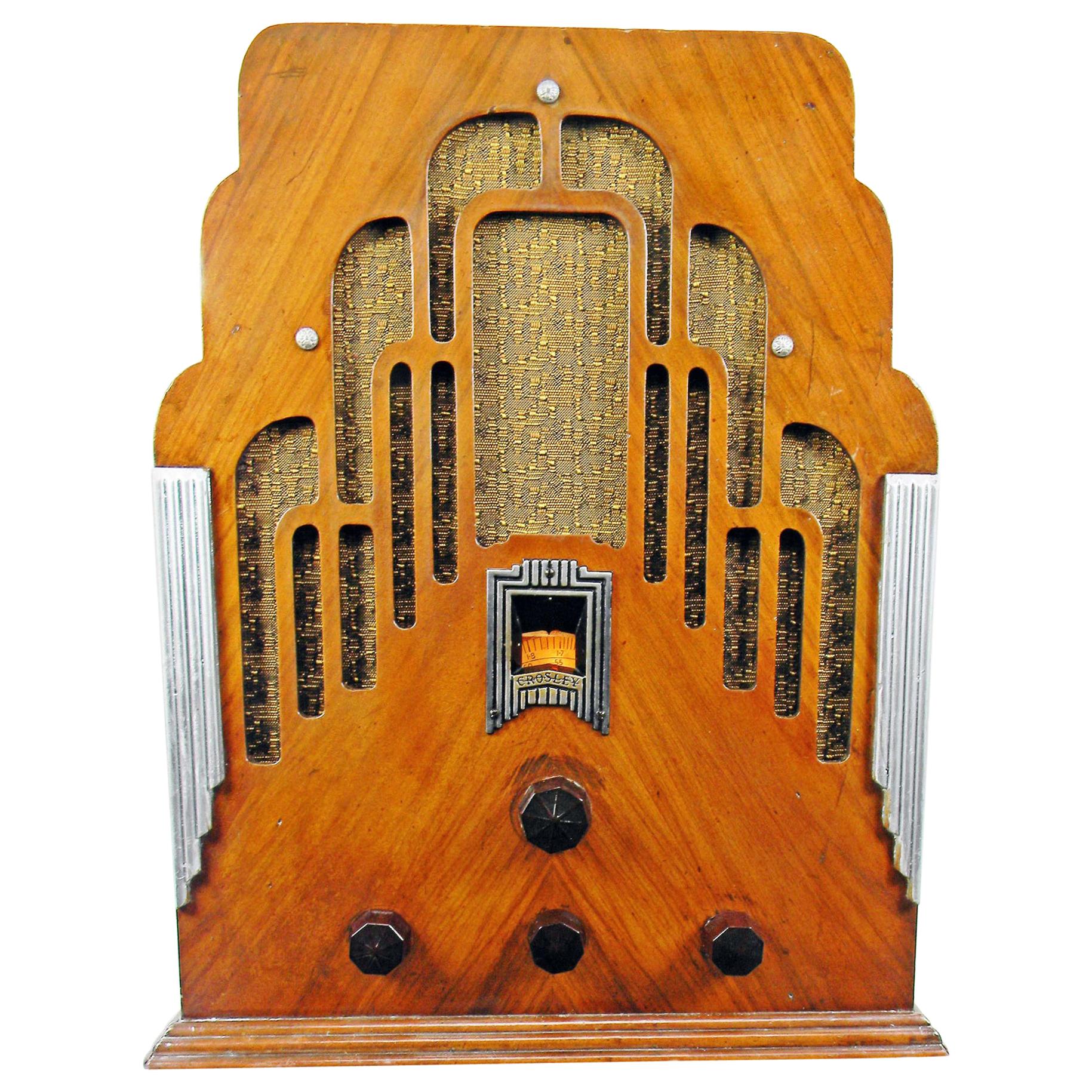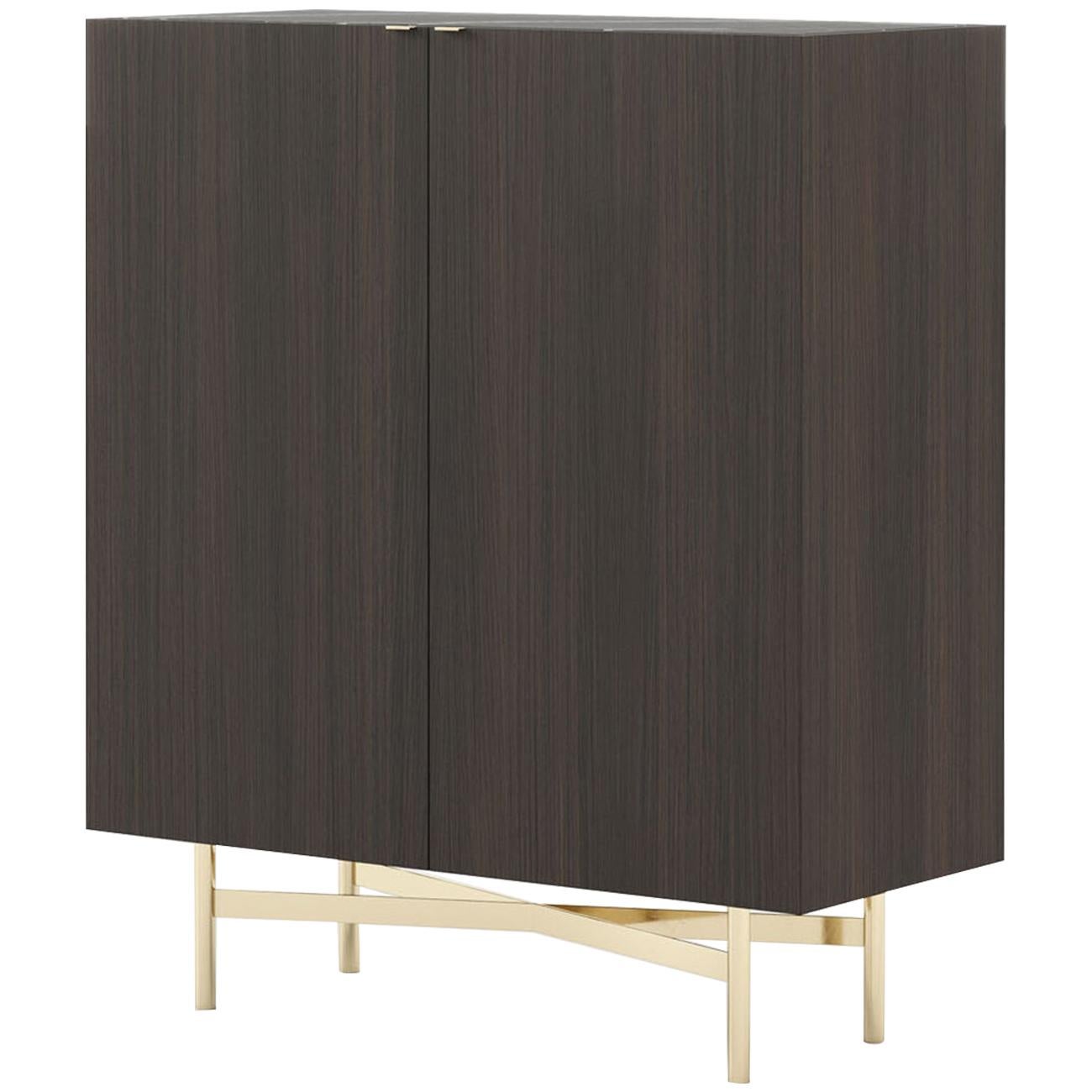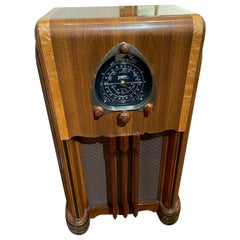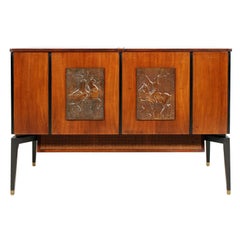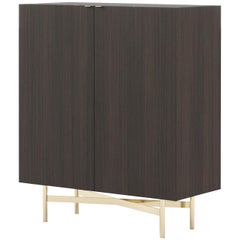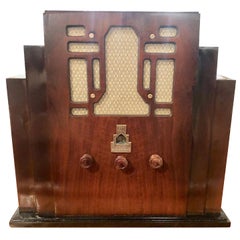
Chicago World's Fair Skyscraper Radio with Bluetooth Speaker
View Similar Items
Want more images or videos?
Request additional images or videos from the seller
1 of 12
Chicago World's Fair Skyscraper Radio with Bluetooth Speaker
About the Item
- Dimensions:Height: 17 in (43.18 cm)Width: 18 in (45.72 cm)Depth: 14 in (35.56 cm)
- Style:Art Deco (Of the Period)
- Materials and Techniques:
- Place of Origin:
- Period:
- Date of Manufacture:1933
- Condition:Minor losses.
- Seller Location:Oakland, CA
- Reference Number:Seller: 26581stDibs: LU871414778191
About the Seller
5.0
Platinum Seller
These expertly vetted sellers are 1stDibs' most experienced sellers and are rated highest by our customers.
Established in 1990
1stDibs seller since 2009
348 sales on 1stDibs
Associations
20th Century Specialists
More From This SellerView All
- Zenith 6-S-78 Tombstone Restored Bluetooth Radio '1936'By ZenithLocated in Oakland, CA1936 Zenith tombstone model 6-S-27. The radio is a spectacular combination of angles and veneers, with the iconic multi-colored and oversized dial. This radio is one of the large tombstone cabinets offering a full range 8-inch speaker and a tremendous quality sound. This model offers both Broadcast and Shortwave reception. The cabinet has been restored and all electronic elements have been checked or replaced so it operates without any issues. It has 1/8th jack input to use with a Bluetooth transmitter or any device you would like to hook up directly. This will allow you an unlimited choice of content which will allow you to use this with your iPhone, smartphone, iPods, or record player. Access your old vinyl, or log on to Pandora, Apple Music, or the playlist on your computer to provide the tunes and use the Bluetooth connection to bring the warm, bright, analog sound of a tube amplifier...Category
Vintage 1930s Art Deco Musical Instruments
MaterialsWood
$3,040 Sale Price20% Off - 1937 Stromberg-Carlson 228-L Console Radio Restored BluetoothBy ZenithLocated in Oakland, CA1937 Stromberg-Carlson 228-L Console Radio Restored Bluetooth. Stromberg Carlson was well know for its commitment to quality and their products are often called the “Rolls Royce” of radios. This outstanding set has been electronically restored and plays great, with awesome tone quality, on both AM and Shortwave bands. The cabinet has been professionally refinished using the proper stains, toner, and lacquer. This is an exceptional radio very nice size and beautiful dial. The chassis has been service and 1/8th input added which will allow you to use this with your iPhone, smartphone, iPods, or record player. Access your old vinyl, or tune into Pandora, Apple Music, or the playlist on your computer to provide the tunes and use the Bluetooth connection to bring the warm, bright, analog sound of a tube amplifier...Category
Vintage 1930s American Art Deco Musical Instruments
MaterialsWood
- Zenith Model 6S254 Console Radio '1938', BluetoothBy ZenithLocated in Oakland, CAThe 6-S-254 prominently features Zenith’s tear-drop (tri-angular) shaped dial that was used for the 1938 line only. The 6-tube 3-waveband Zenith 6-S-254 (6S254) was introduced in June of 1937 as part of Zenith’s line-up for the 1938 model...Category
Vintage 1930s American Art Deco Musical Instruments
MaterialsGlass, Bakelite, Wood
- Zenith 9S263 Sutter Dial Oval Shaped Console Radio with BluetoothBy ZenithLocated in Oakland, CAZenith 9S263 sutter dial oval shaped console radio with bluetooth This rare Classic console was part of the 1938 Zenith lineup that featured many other radios that used the unique “Robot” dial, commonly called a shutter dial. The 9-S-263 is a very rare “collector quality” model because very few were made compared to the other models; the oval shape sets it apart. It has motorized tuning, Local/Distance & tone selectors, adjustable bass speaker baffle, tuning eye, and the band selection shutter dial. The cabinet is stunning with walnut veneers and maple inlays. The interior was redone in the correct Zenith blue. Shutters are excellent with no corrosion or paint loss. Chassis is in mint condition and receives the Broadcast band and Short Wave in two bands from 1.7 to 18 MC. Complete electronics tuneup with all new capacitors; tubes and resistors checked and replaced as needed. Grille cloth is a correct repro; knobs are original wood. This radio includes an aux input cable so you can play your favorite tunes or Old Time Radio shows using a CD player...Category
Vintage 1930s American Art Deco Dry Bars
MaterialsFabric, Wood
- Airline 62-346 Art Deco Restored Tube Radio BluetoothLocated in Oakland, CAThe Airline 62-346 Art Deco restored tube radio bluetooth was sold through montgomery ward, circa 1938. The chassis and cabinets were made by other companie...Category
Vintage 1930s American Art Deco Musical Instruments
MaterialsMetal
- Zenith 12S2 67 Shutter Dial 12 Tube Console with Bluetooth Restored RareBy ZenithLocated in Oakland, CAZenith 12S2 67 Sutter Dial 12 Tube Console with Bluetooth Restored. This console radio, introduced as part of Zenith’s 1938 line in June 1937, is a much-coveted set that is rare and hard to find today. This is a 1938 Zenith...Category
Vintage 1930s American Art Deco Dry Bars
MaterialsFabric, Wood
You May Also Like
- 1960s Music Radio TV Record Player Cabinet, Mahogany, Osvaldo Borsani attributedBy Osvaldo Borsani, CantuLocated in Vigonza, PaduaMidcentury music radio TV record player cabinet (or Dry Bar cabinet) in mahogany Osvaldo Borsani attributed Rare and important polyvalent enterta...Category
Mid-20th Century Italian Mid-Century Modern Musical Instruments
MaterialsCopper
- Chicago BarLocated in Paris, FRBar Chicago with wood structure in smocked oak matte finish and with polished stainless steel base in gold finish.Category
21st Century and Contemporary Portuguese Dry Bars
MaterialsStainless Steel
$6,948 Sale Price / item20% Off - Cocktail Bar or Drinks Cabinet with Radio and Turntable from Déco EraBy CarischLocated in Alessandria, PiemonteM/1967 - Rare perfect distophone CARISCH with record player LESA: all perfectly working in a nice functional mobile cocktail bar or drinks cabinet from the Art Déco Era ! Its spec...Category
Mid-20th Century Italian Art Deco Cabinets
MaterialsWalnut
- Art Deco Wolfgang Hoffmann Romweber World's Fair Century of Progress SideboardBy Wolfgang Hoffmann, Romweber Furniture Co.Located in Forney, TXA rare and important American Art Deco Century of Progress Sideboard by iconic designer Wolfgang Hoffmann (Austrian, 1900-1969) for Romweber Company, Batesville, Indiana. circa 1933-1936 Created for the 1933 Chicago World's Fair, fine quality craftsmanship and construction, having a rectangular exotic rosewood veneered top over conforming solid wood case fitted with four drawers affixed with horizontal pulls, the top drawer opening to reveal felt lined divided interior for silverware, flanked by cabinet doors opening to shelved interior, subtle geometric lines add interest. Rosewood, mahogany, richly figured blonde - golden birch or primavera. Signed, top drawer interior, featuring 1933 World's Fair mark impressed. **Please note, at the time of writing this, a matching display case - vitrine cabinet (shown in last photo) is currently available separately** Provenance / Acquisition: Property from the important and iconic Collection of Mr. James I. Rafftesaeth Jr., Dallas, Texas Acquired from highly reputable auction house, Heritage Auctions, Dallas, Texas. 2022 Design Signature Auction catalog #8091 History: Wolfgang Hoffmann was born in Vienna, Austria in 1900. He is the son of famous architect, pedagogue and Wiener Werkstatte cofounder, Joseph Hoffmann (1870-1956). Early on, following his father’s s interests, he was trained in the decorative arts and design. Wolfgang Hoffmann once reminisced, “I spent eight years at the Realschule, then three years went to a special architectural school, where I perfected my technical knowledge of architecture and general construction. From this school, I was graduated to the Kunstgewerbeschule [Studying under Oskar Strnad and Josef Frank in Vienna]. After finishing this school, I had one and a half years of practical in a well known architect’s office. Thereafter I worked in my Father’s office for two years”. Hoffmann met his future wife, Polish immigrant Pola (1902-1984) when they were both studying at the Kunstgewerbeschule. Joseph Urban (1872-1933) was needing an assistant for his architectural business in New York and contacted his friend and colleague, Joseph Hoffmann in Vienna. Hoffmann recommended his son Wolfgang. Urban hired him and sent a first class passage ticket to Vienna for Wolfgang to travel to New York. Wolfgang married Pola and traded his ticket for two tickets to America in steerage, arriving in New York City in December of 1925. Leaving the Urban office after nine months, Wolfgang and Pola formed an independent design practice with offices on Madison Avenue in Manhattan with the purpose of creating contemporary interiors and industrial designs. Early work included theaters, stores, and apartments mostly in New York City. During the late 1920’s and early 1930’s the Hoffmanns designed custom furniture for private clients. Some of these examples were shown in the February 1929 issue of House and Garden. Curiously, the examples’ design was attributed to Urban and the production to Pola Hoffmann, Inc. Established in the fall of 1928, the American Designers’ Gallery was “devoted exclusively to showing objects and interiors for practical use… by fourteen American architects and designers”. Its members included the Hoffmans and Urban as well as ceramist Henry Varnum Poor (1888-1971), architect Raymond Hood (1881-1934), artist designer Winold Reiss (1886-1953), graphic designer Lucien Bernhard (1896-1981), decorator Donald Deskey (1894-1989), and architect Ely Jacques Kahn (1884-1972). The Hoffmanns’ work was included in the American Designers’ Gallery’s two showcase events, its 1928 and 1929 exhibitions. Their dining alcove at the 1929 event featured a bench with a dinette table and two chairs in American walnut designed by Wolfgang and a rug by Pola. Lucien Bernhard, fellow Austrian immigrant who settled in New York a year before the Hoffmanns, operated the gallery and decorating service Contempora with Munich resident Bruno Paul (1874-1968). The Hoffmanns, occasionally participating with Contempora, designed a number of outstanding interiors, including the constructivist living room of 1930 for Mrs. O.R. Sommerich at 40 East 66th street. In 1934, Donald Deskey commissioned Wolfgang to design birchwood furnishings for the eclectic apartment at 625 Park Avenue belonging to Helena Rubinstein. In 1931, Wolfgang exhibited his work at the Pennsylvania Art Museum and the Museum of Modern Art in New York City. The same year, with Kem Weber (1889-1963) he organized the second and final exhibition of AUDAC- “Modern Industrial and Decorative Arts”- at the Brooklyn Museum. At this event, the Hoffmanns showed the dining room previously included in the American Designer’s Gallery’s 1929 exhibition in the Chase Bank Building lobby at 145 West 57th Street in Manhattan. In 1932 Wolfgang was asked to assist Urban in developing the color scheme for the 1933-34 Chicago World’s Fair “A Century of Progress”. He was also commissioned to design the interior and furniture for the fair’s lumber industries house. There he executed its living and dining rooms furnished by Kroehler Manufacturing Company of Chicago; the boys’ room by Shower Brothers...Category
Early 20th Century American Art Deco Sideboards
MaterialsBirch, Mahogany, Rosewood
- Art Deco Signed Wolfgang Hoffmann for Romweber World's Fair Display CabinetBy Romweber Furniture Co., Wolfgang HoffmannLocated in Forney, TXA rare and important Art Deco period Century of Progress Display Cabinet designed by Wolfgang Hoffmann (Austrian, 1900-1969) for Romweber Company, Batesville, Indiana, United States of America. circa 1933-1936 Created for the 1933 Chicago World's Fair, one piece design, having a rectangular showcase top with glass panel sides and a pair of sliding glass doors, over solid wood chest fitted with four drawers affixed with horizontal pulls, flanked by cabinet doors, opening to shelved interior. Rosewood, mahogany, richly figured blonde - golden birch or primavera, and glass. Signed, original label to drawer interior, featuring 1933 World's Fair mark impressed. **Please note, at the time of writing this, a matching sideboard - buffet (shown in last photo) is currently available separately** Provenance / Acquisition: Property from the important and iconic collection of Mr. James I. Rafftesaeth Jr., Dallas, Texas Acquired from highly reputable auction house, Heritage Auctions, Dallas, Texas. 2022 Design Signature Auction catalog #8091 History: Wolfgang Hoffmann was born in Vienna, Austria in 1900. He is the son of famous architect, pedagogue and Wiener Werkstatte cofounder, Joseph Hoffmann (1870-1956). Early on, following his father’s s interests, he was trained in the decorative arts and design. Wolfgang Hoffmann once reminisced, “I spent eight years at the Realschule, then three years went to a special architectural school, where I perfected my technical knowledge of architecture and general construction. From this school, I was graduated to the Kunstgewerbeschule [Studying under Oskar Strnad and Josef Frank in Vienna]. After finishing this school, I had one and a half years of practical in a well known architect’s office. Thereafter I worked in my Father’s office for two years”. Hoffmann met his future wife, Polish immigrant Pola (1902-1984) when they were both studying at the Kunstgewerbeschule. Joseph Urban (1872-1933) was needing an assistant for his architectural business in New York and contacted his friend and colleague, Joseph Hoffmann in Vienna. Hoffmann recommended his son Wolfgang. Urban hired him and sent a first class passage ticket to Vienna for Wolfgang to travel to New York. Wolfgang married Pola and traded his ticket for two tickets to America in steerage, arriving in New York City in December of 1925. Leaving the Urban office after nine months, Wolfgang and Pola formed an independent design practice with offices on Madison Avenue in Manhattan with the purpose of creating contemporary interiors and industrial designs. Early work included theaters, stores, and apartments mostly in New York City. During the late 1920’s and early 1930’s the Hoffmanns designed custom furniture for private clients. Some of these examples were shown in the February 1929 issue of House and Garden. Curiously, the examples’ design was attributed to Urban and the production to Pola Hoffmann, Inc. Established in the fall of 1928, the American Designers’ Gallery was “devoted exclusively to showing objects and interiors for practical use… by fourteen American architects and designers”. Its members included the Hoffmans and Urban as well as ceramist Henry Varnum Poor (1888-1971), architect Raymond Hood (1881-1934), artist designer Winold Reiss (1886-1953), graphic designer Lucien Bernhard (1896-1981), decorator Donald Deskey (1894-1989), and architect Ely Jacques Kahn (1884-1972). The Hoffmanns’ work was included in the American Designers’ Gallery’s two showcase events, its 1928 and 1929 exhibitions. Their dining alcove at the 1929 event featured a bench with a dinette table and two chairs in American walnut designed by Wolfgang and a rug by Pola. Lucien Bernhard, fellow Austrian immigrant who settled in New York a year before the Hoffmanns, operated the gallery and decorating service Contempora with Munich resident Bruno Paul (1874-1968). The Hoffmanns, occasionally participating with Contempora, designed a number of outstanding interiors, including the constructivist living room of 1930 for Mrs. O.R. Sommerich at 40 East 66th street. In 1934, Donald Deskey commissioned Wolfgang to design birchwood furnishings for the eclectic apartment at 625 Park Avenue belonging to Helena Rubinstein. In 1931, Wolfgang exhibited his work at the Pennsylvania Art Museum and the Museum of Modern Art in New York City. The same year, with Kem Weber (1889-1963) he organized the second and final exhibition of AUDAC- “Modern Industrial and Decorative Arts”- at the Brooklyn Museum. At this event, the Hoffmanns showed the dining room previously included in the American Designer’s Gallery’s 1929 exhibition in the Chase Bank Building lobby at 145 West 57th Street in Manhattan. In 1932 Wolfgang was asked to assist Urban in developing the color scheme for the 1933-34 Chicago World’s Fair “A Century of Progress”. He was also commissioned to design the interior and furniture for the fair’s lumber industries house. There he executed its living and dining rooms furnished by Kroehler Manufacturing Company of Chicago; the boys’ room by Shower Brothers...Category
Early 20th Century American Art Deco Vitrines
MaterialsGlass, Mahogany, Rosewood
- Gothic Revival Drinks Cabinet w Church Window Panels and Angel sculpturesLocated in Lisse, NLAnother piece of Gothic Art furniture. This time with a special feature. This handcrafted Gothic Revival cabinet or credenza with drawer from the late 19th century is actually made ...Category
Antique 19th Century German Gothic Revival Religious Items
MaterialsWrought Iron
Recently Viewed
View AllMore Ways To Browse
1933 Worlds Fair
Restoring Vintage Radios
Restored Vintage Radio
Restore Vintage Radio
Restored Vintage Radios
Rare Vintage Speakers
Vintage Cabinet With Record Player
Clock Radio
Vintage Wood Radio Cabinet
Record Player Radio
Art Deco Radio Bar
Chicago World Fair 1933
Skyscraper Clock
Art Deco Record Cabinet
Art Deco Skyscraper Clock
Radio Bar Cabinet
1933 Radio
Worlds Fair Clock



